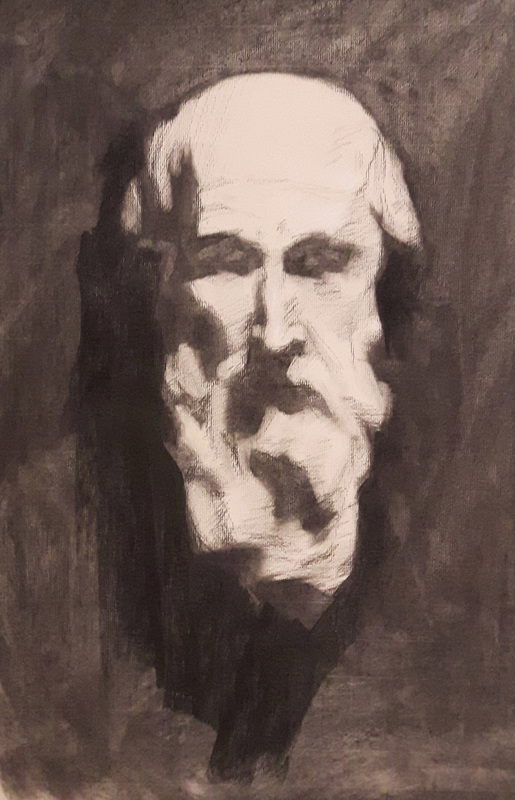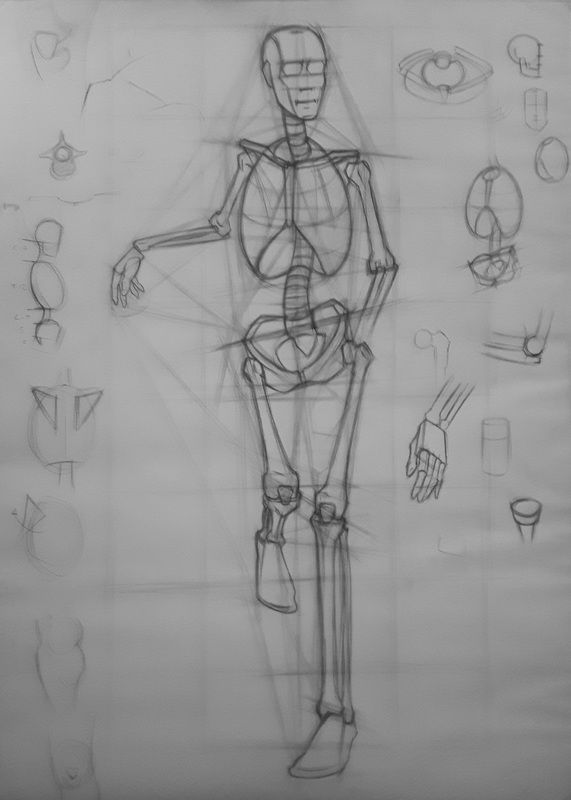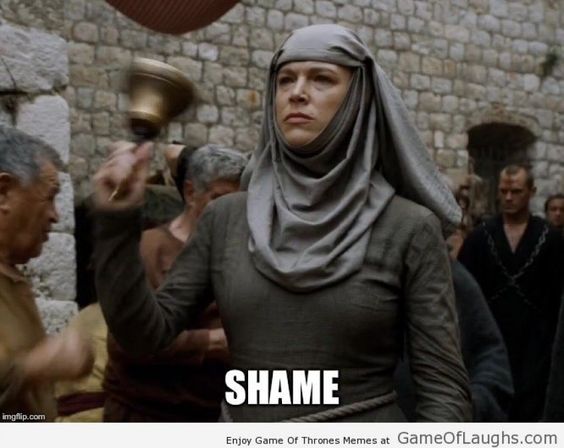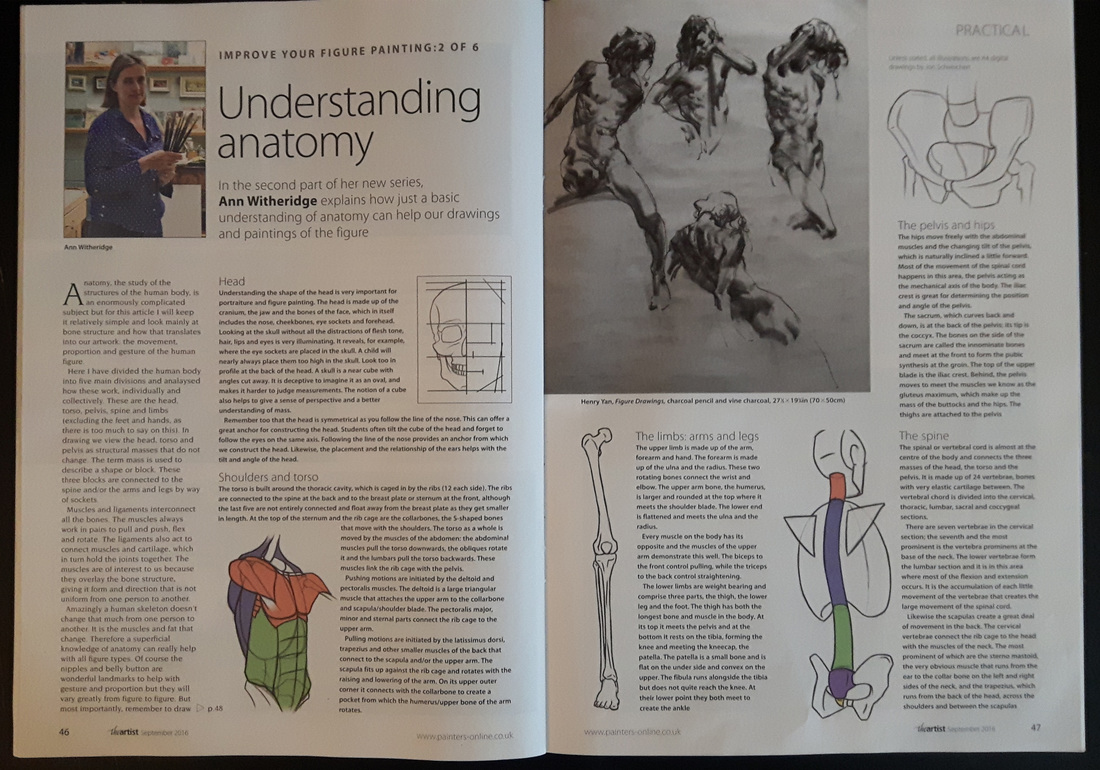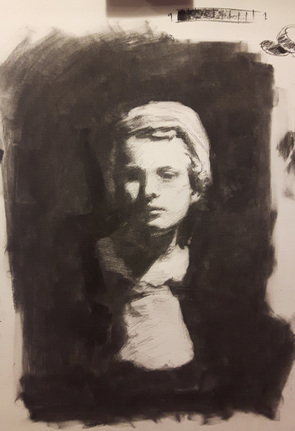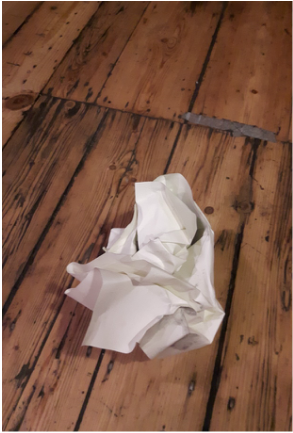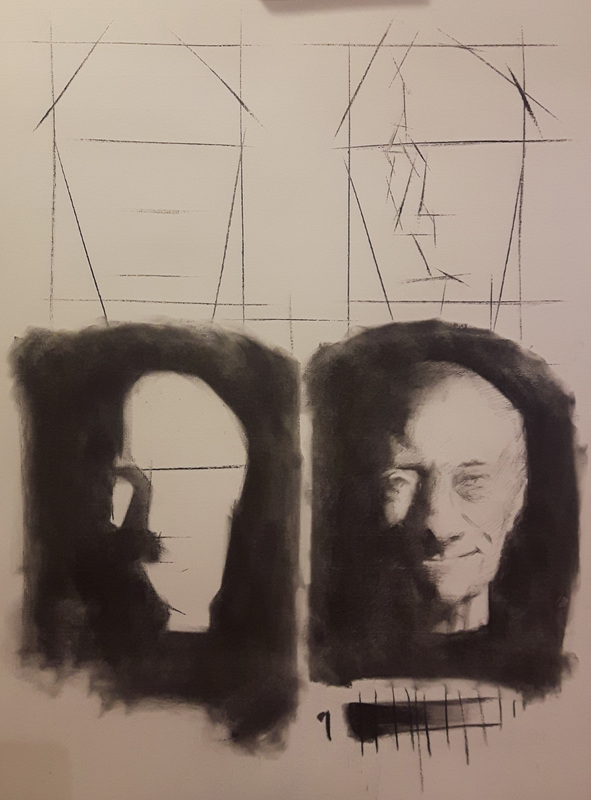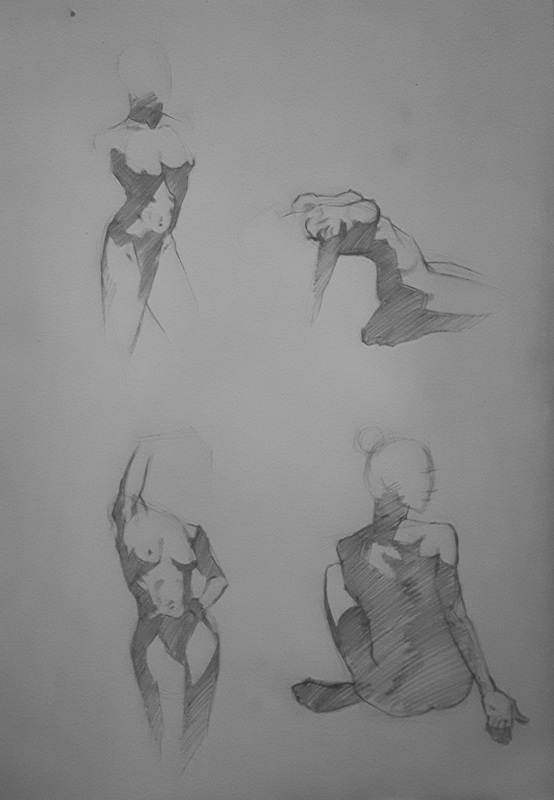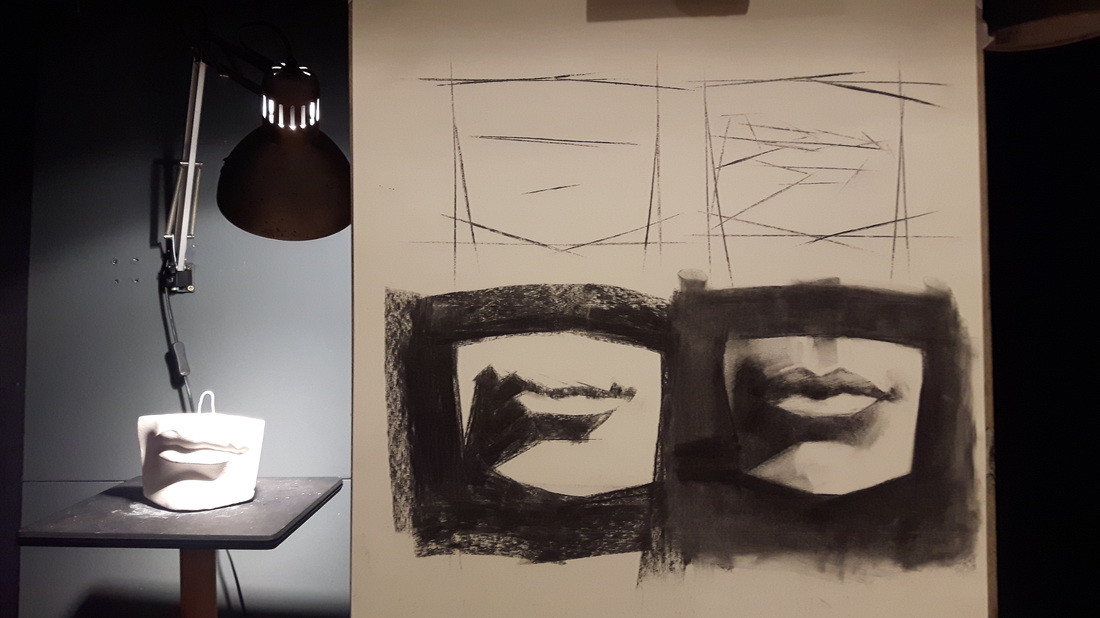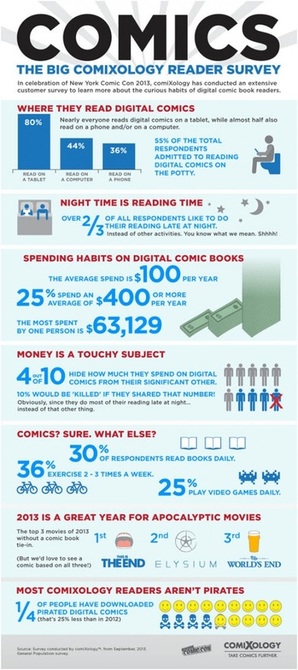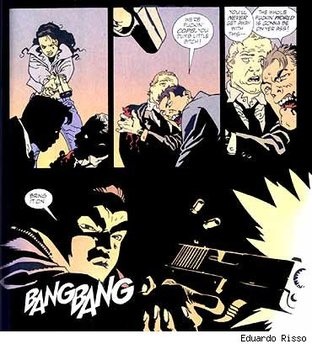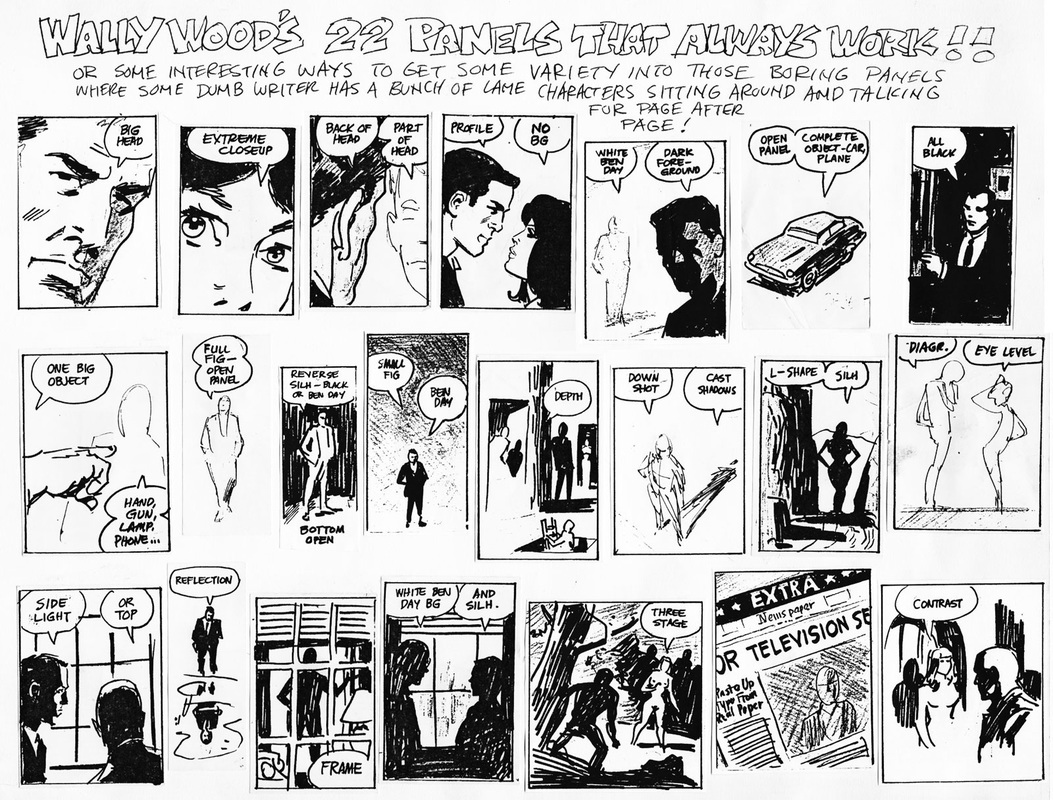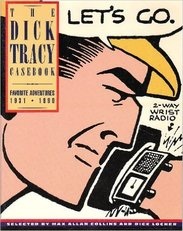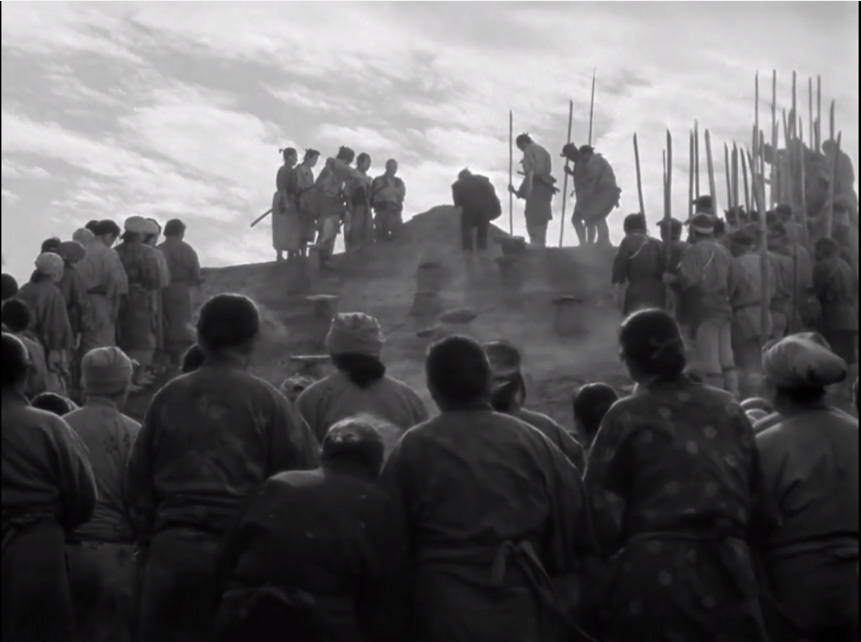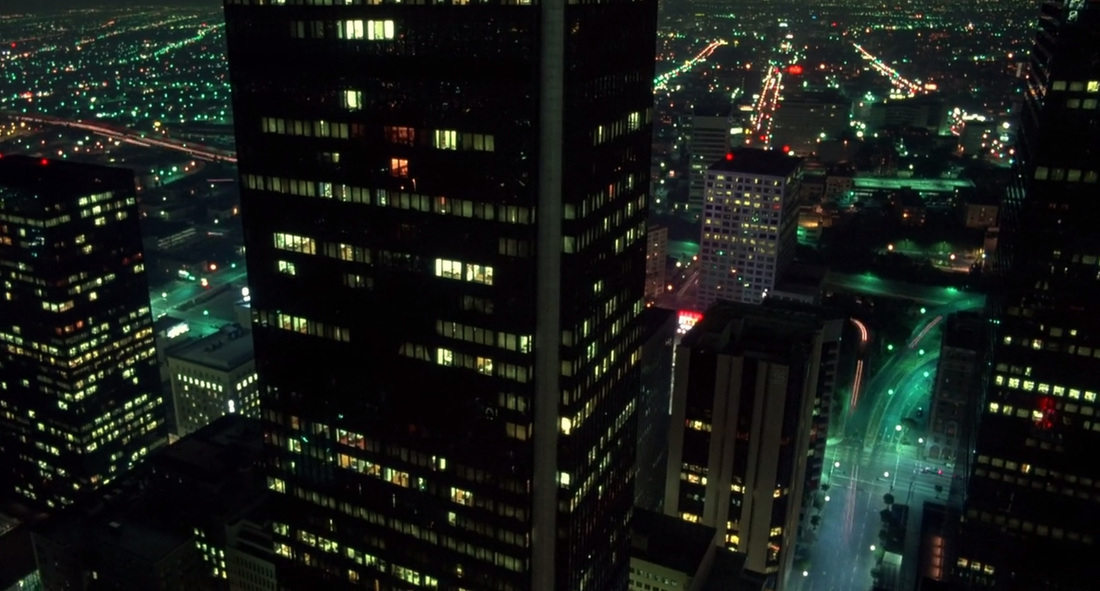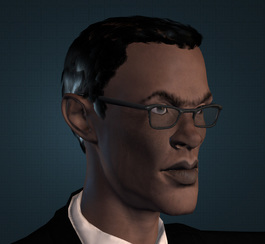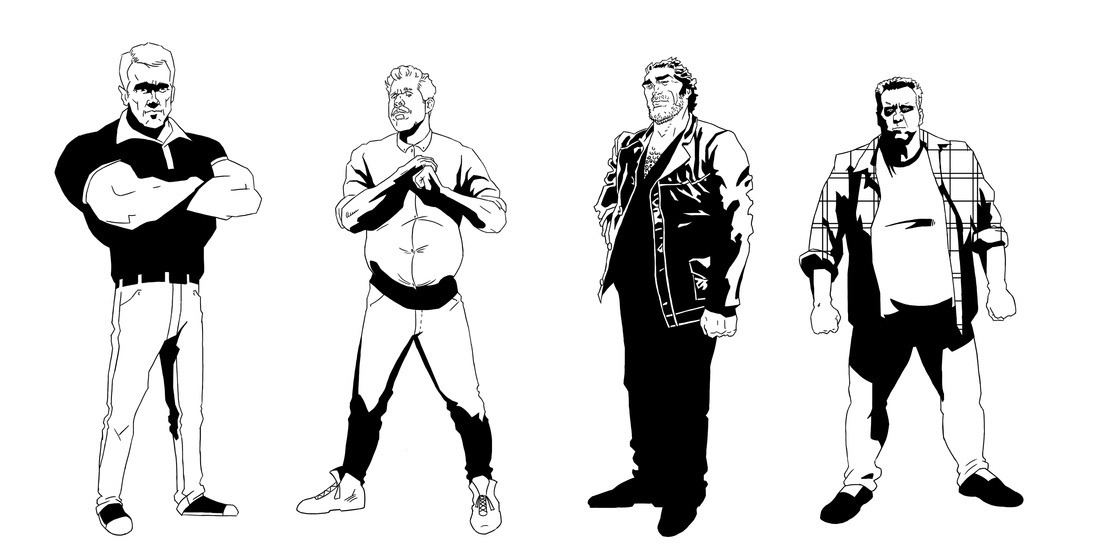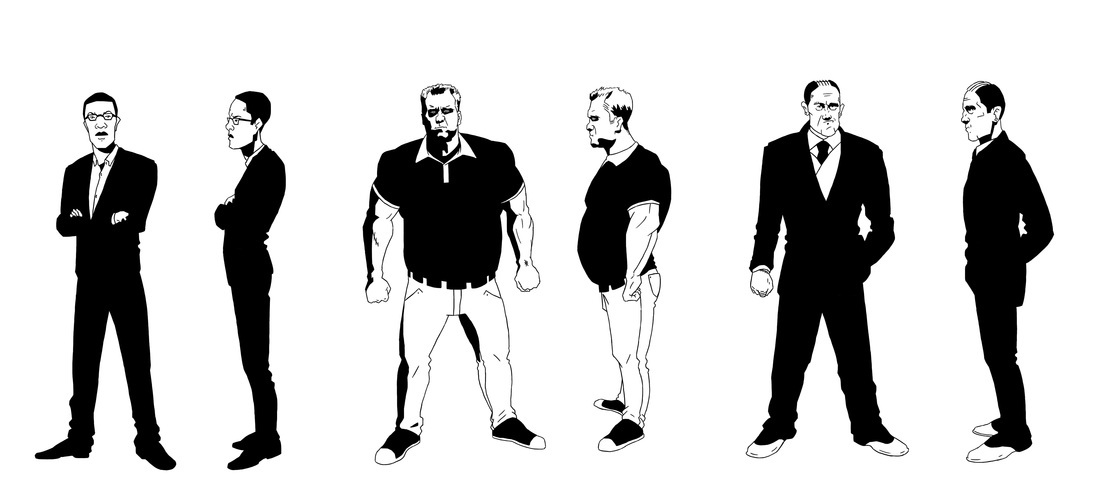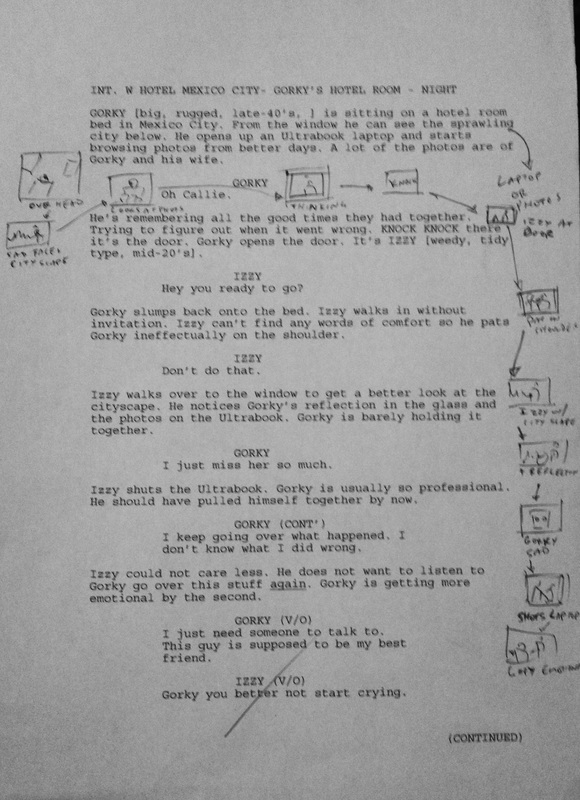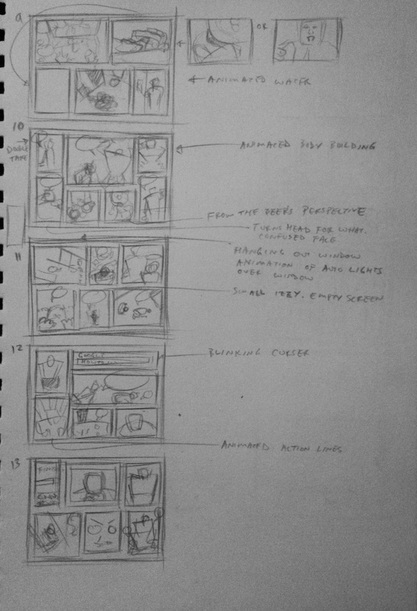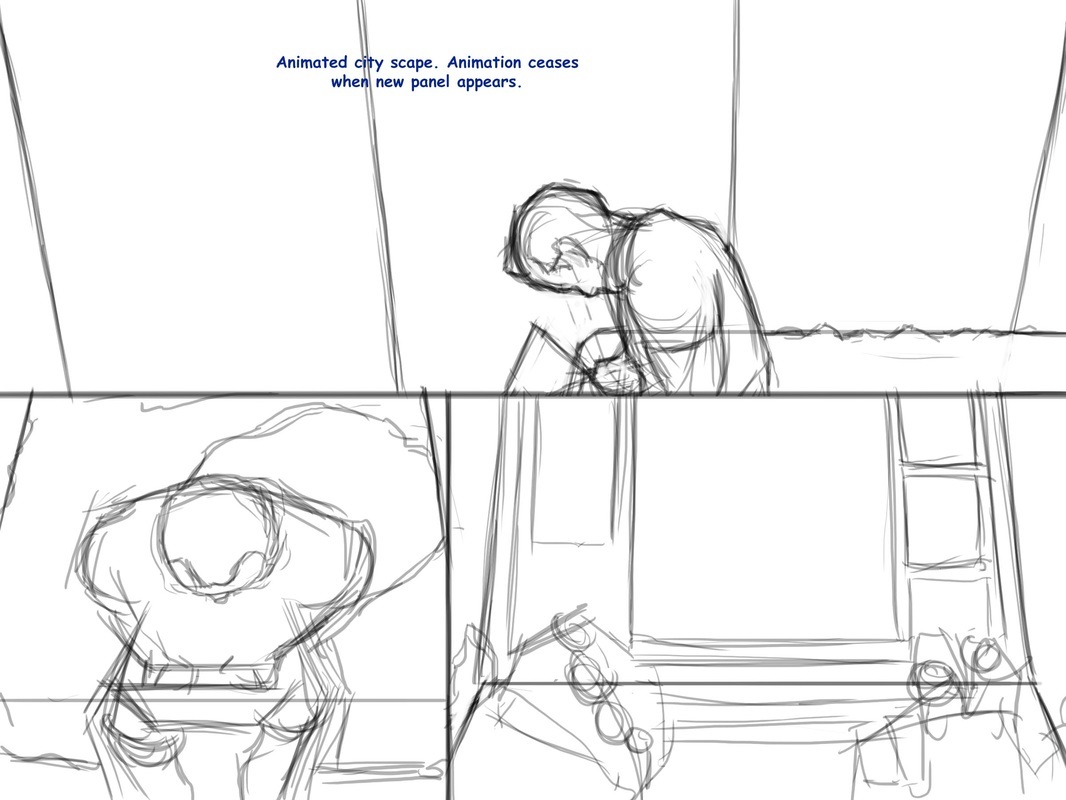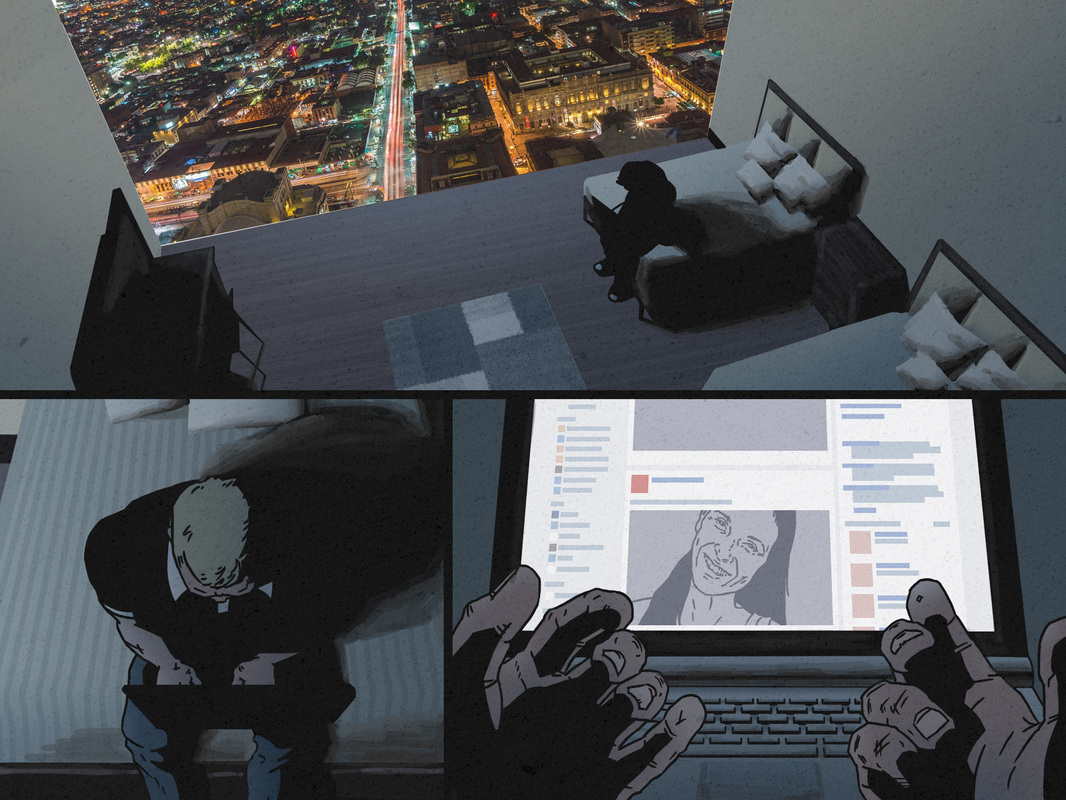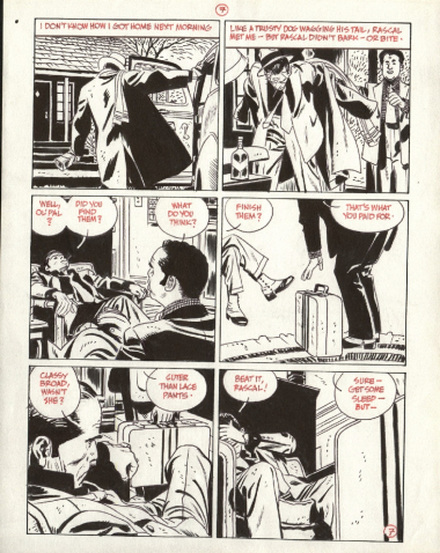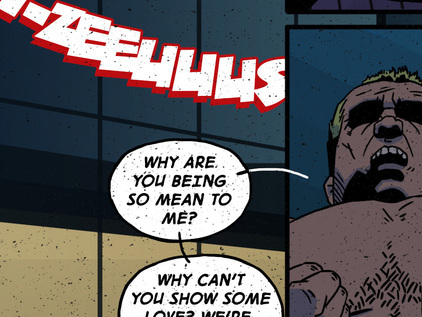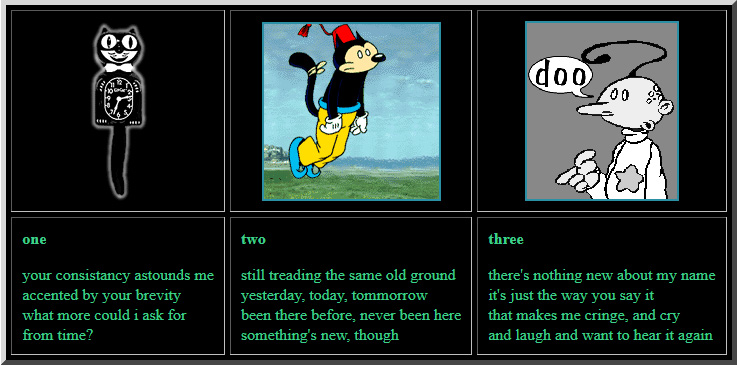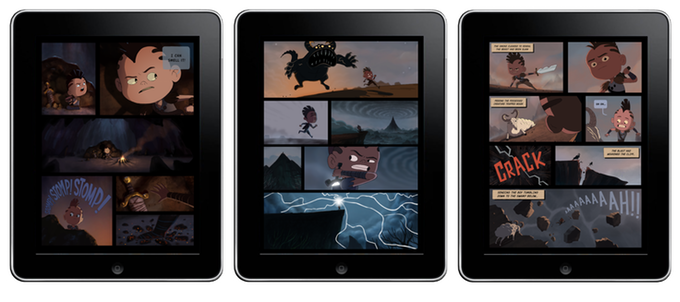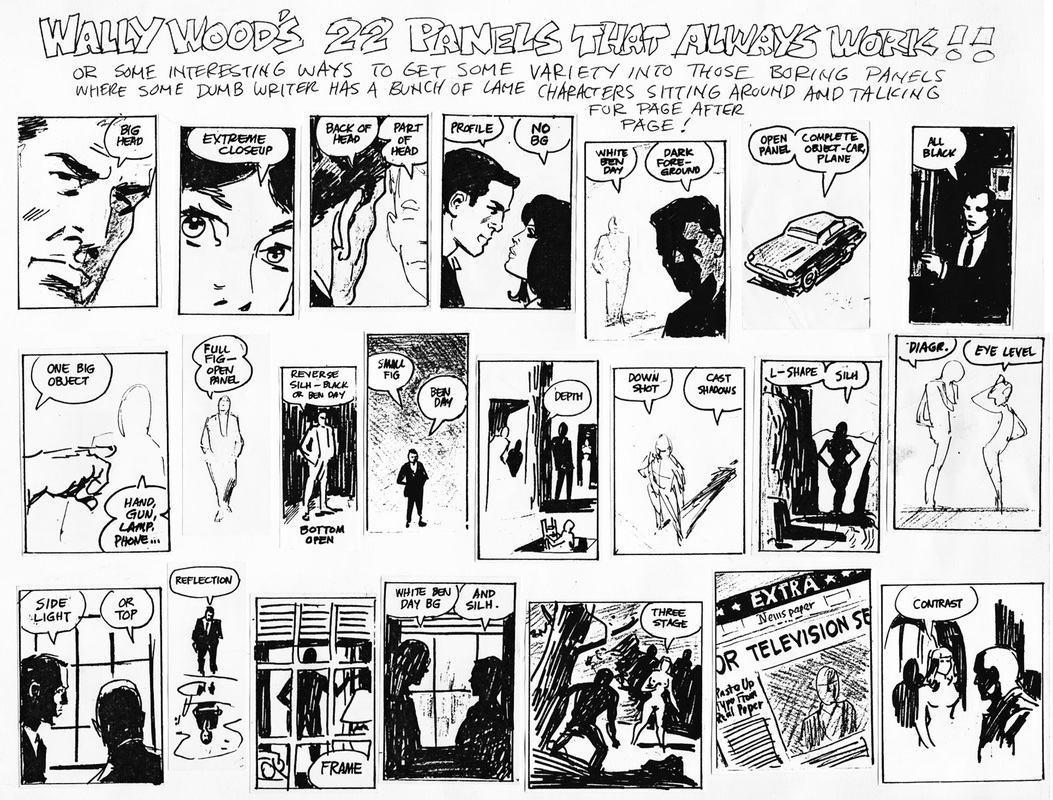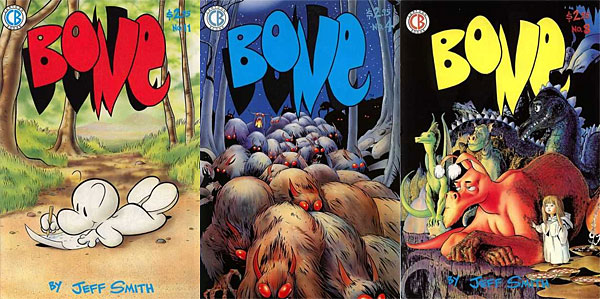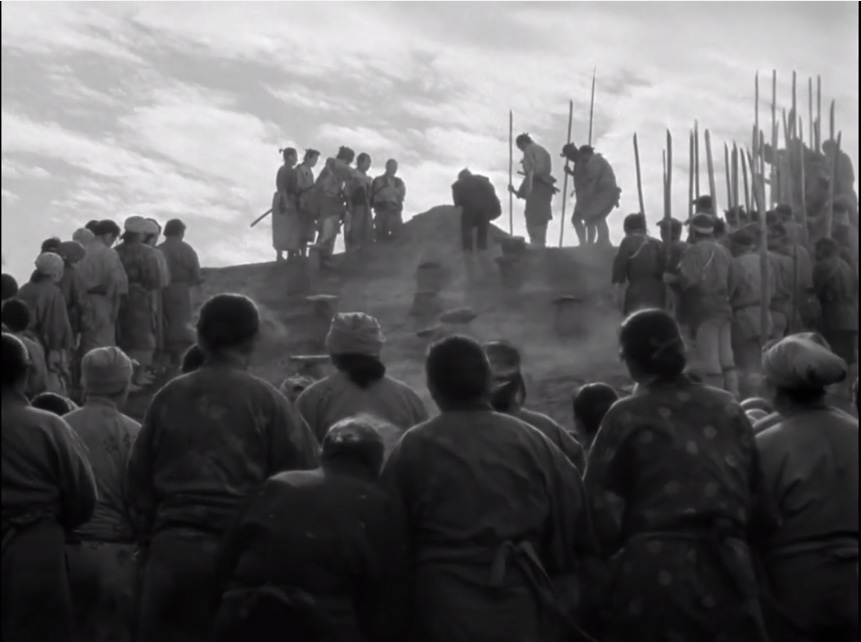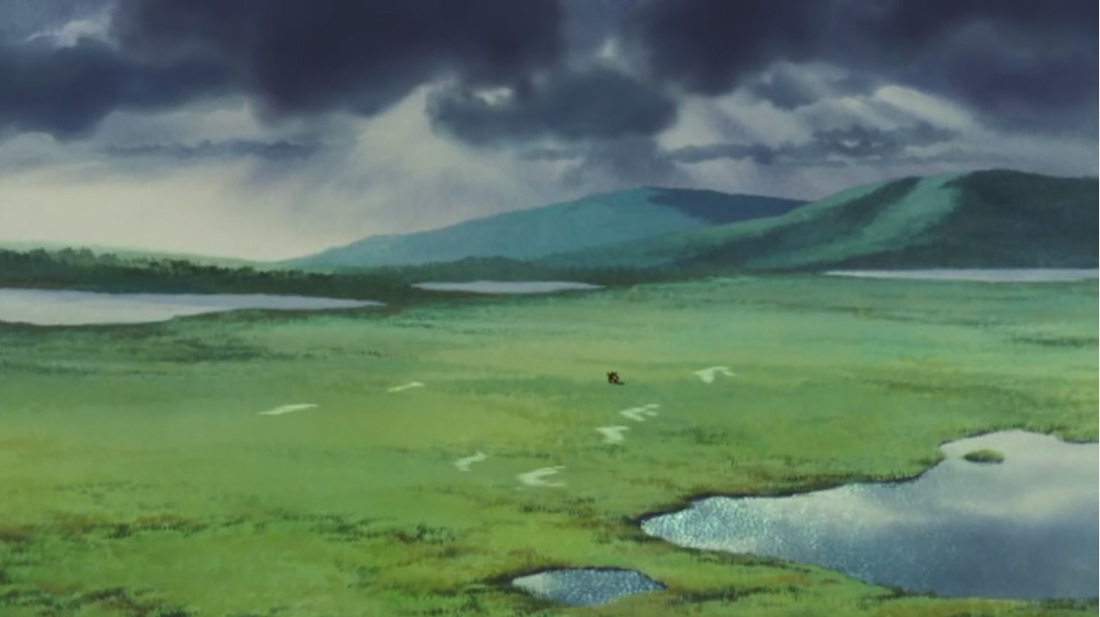|
I spent the last week with my nose buried in my work trying to get ready for the Thought Bubble Comic Festival so here’s my weekly post on teaching at London Fine Art studios a week late. More on my experience at the festival and sleep deprived hallucinations later. My foundation classes had their last class of charcoal drawing and I couldn’t be more ready to move on to oil paint. It’s been ages since I’ve got to get the paint out and I’m starting to realise how much I missed it. I had to make an intervention with my foundation students this week. A healthy amount of self criticism is good. Students who think everything they do is good and refuse to take a critique are pointless to work with. On the other side of the spectrum, students who are overly self critical never build the self confidence to move forward. I’ve been dealing with a third variety and it’s taken me some time to wrap my head around it. Often when I approach a student to give a critique they say their drawing is horrible, terrible, a monster, etc. before I’m even able to get a word out. Then follow up each point a make with a reiteration. At first, I thought this might be a cultural difference – Americans are over positive and Brits, overly self-deprivating – but I always thought there was something odd about it. I’ve come to the conclusion that it’s some sort of ego protection. By dismissing their work, they are separating it from themselves and failing to focus on their process having a problem which created the poor work. This moves the critique away from their actions and on to something that is not them. I had my limit of ego protection last week so I pulled the class together and told them to leave it at the door. Be self critical. It will enable you to develop but make sure it is in a way that is about aiding progress, not hindering it. My anatomy class was much more straightforward. We did our last day of skeletal anatomy and will be moving on to muscles this week. I gave them a pop quiz on the anatomy we’ve gone over so far. Punishment for getting a question wrong was public shaming via the Shame Bell Mobile App. I highly recommend it for motivating students.
0 Comments
Just got my copy of 'The Artist' magazine with the article I worked on with artist Ann Witheridge. We give an introduction to what is taught in the Gesture and Anatomy class at London Fine Art Studios. Copies can be bought here: www.painters-online.co.uk/store This week at London Fine Art Studios I continued demonstrating skeletal structure to my Anatomy students. We have one more week of skeleton and then it's on to muscular forms.
I started my Foundation students on their first long drawing. Now that they've seen the entire drawing process that is taught they're beginning to trust and understand the system. Here's my terrible drawing demo that almost ended up like the picture on the right. My students at London Fine Art Studios were very productive this week. I think my intervention last week helped get them into gear.
The Foundation Class moved onto chiaroscuro and modeling shadow shapes this week. One of my classes did exceptionally well. I think this due to strictly following instructions on how to prepare the charcoal on the page. Some evening students didn't put as much effort into following the steps and many of them found themselves struggling with the material. My anatomy students started a two week section on the basic skeletal forms. More on that next week... It felt good to be back at Sketch Club for the first time in around a year. Got to work with Valentina, an incredible model who has surprisingly just started a few weeks ago.
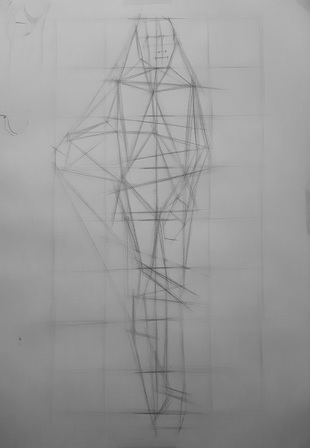 I had a very interesting week at London Fine Art Studios and a very challenging class to contend with. Last week my Gesture and Anatomy class did not perform nearly to the standards that I expect. We are starting a nine week project so having a good foundation is essential. I gave my students what at this point in their studies should be a simple task – draw from the model using only measuring lines, find accurate proportions and do not commit to drawing any of the contours of the figure (demonstration left). What did they end up with? Just enough measuring lines to say they completed the task, piss poor proportions, contours of the figure and everything else I didn’t ask for! I had gotten used to students who have done several terms of G&A and gave this group a bit too much slack. I recommend students treat their art studies like Bruce Lee treated martial arts, ‘Absorb what is useful. Reject what is useless. Add what is uniquely your own.’ Most people will approach their learning with an instinctive form of this philosophy even if they don’t fully understand it. I’m sure it sounds strange to reference a martial artist when teaching fine art, but I found the first and last chapters of ‘The Tao of Jeet Kune Do’ by Lee to be one of the best influences on my artistic study. Unfortunately Lee’s proverb can very easy be used to retreat to a form of ego protection instead of genuine learning and self improvement. Students can reject something because they find it difficult or initially confusing rather than it actually being useless. However it is impossible to accurately judge if something is useful or useless until the students is able to correctly execute the technique or method. Henry Yan, an artist I had the privilege of studying under, similarly said in order to understand if something is useful or not you must be able to perform the principle. So this week, we started our drawings over and I promised my students we would not leave this stage until they got it right. I gave them a series of simple directions which they were not to defer from: exactly what anatomical points to measure, how to measure them and in which order. Taking the students back to basics and not allowing them to diverge had a very positive effect – better drawings and a better understanding of the principle. I did find that by the end of class a couple of students had been pushed out of their comfort zone to the point where they started rejecting the instructions and reverted again to a type of ego protection, but we’ll address that next week. My Foundation Classes were much more straightforward. The students were very happy to finally move on from general proportions to drawing shadow shapes (demonstration above). I’ve been trying create a little competition between my morning and evening Foundation Classes to boost their drive. Telling my evening class that the morning group had outperformed them that day had an impressive reaction. All the students worked through their break straight to the end of class and kept drawing after I called time! This week at London Fine Art Studios we moved ahead in the Foundation course. Students learned the beginnings of our drawing method and are eager to move on to Chiaroscuro next week.
In Gesture and Anatomy we laid the foundation for our nine week anatomy study. More to come on that in my next post. I'm back at London Fine Art Studios for the Fall term. This year I'm teaching three classes; Gesture & Anatomy and two sessions of the Foundation Course.
In week one I gave an introduction to drawing with charcoal to my foundation students and discussed basic drawing techniques. In my anatomy class I reviewed perspective before we start deconstructing the human figure next week. The drawing above is one of my in class demonstrations. Keep an eye on my blog for more updates! 'Gorky and Izzy's Trip to Mexico' is the project I completed for my Master's of Illustration thesis at the University of Hertfordshire. The thesis recieved a distiction. I am showing the below preview while I revise the comic for future publishing. ProcessFor my thesis I created ‘Gorky and Izzy’s Trip to Mexico’, a digital comic in line with current technology and attributes that go beyond current technological limits. The comic was made as a submission for online sale on ComiXology in two parts: -A PDF document of each still, in line with the ComiXology Submission Guidelines and current technology, annotated with notes for incorporation into Guided View™ -An online preview showing how the comic will function in Guided View™ along with animated attributes not yet possible in Guided View™ - In the comic I challenged the limits of what is a comic by including atmospheric, looping animations. Apps and ReadersI began my project by researching the different methods of distribution for digital comics. Comic reader applications for mobile technology interested me due to their functioning business models. I decided to base my project on submission to ComiXology because they are the most successful comic app and their Guided View™ software is so far the most developed. The reproduction of print comics for digital has been clunky mainly due to the fact that large portrait pages do not fit small landscape screens. Guided View™ was an attempt to solve this issue by using small animations to guide the reader through the comic. This inadvertently created an opportunity for artists to create comics solely for the application with new forms of panel transitions. Market and Audience
ScriptI worked from a script that was made for or at least adapted by someone else for a comic book. Adapting a narrative myself would create too many variables that I would need to consider and research in my studies. I posted adverts on a number of websites seeking a writer with a finished or close to finished script that was willing to collaborate. I received a wide range of replies - not all as professional as others. My requirements were quite limited to begin with. Mainly I was looking for a clear, professionally written narrative that was close to complete. As I developed my research I started considering the uniqueness of characters, settings and how I would be able to visually depict them. When I understood what I wanted to accomplish in my final product I was able to consider if I could present the story in Guided View™ and animate small parts of it. I decided on the script 'Gorky and Izzy's Trip to Mexico' by F. E. Rahman because of the emphasis on inter relations between characters which I believe is more suitable for my target audience. Rahman and I met to discuss how we could work together on the project. Rahman saw and accepted my proposal. We agreed that I would do all of the illustration, lettering and layout for this script while presenting my work to Rahman and seeking feedback. We were both comfortable with collaboration and making suggestions, but respected other's disciplines and contribution to the comic. Visual Style
Visual Style – Camera AnglesI used a number of extreme camera angles in my story telling. I referred to the comics I had researched, film noir and ‘Setting Up Your Shots: Great Camera Moves Every Filmmaker Should Know’ – a guide by Jeremy Vineyard. In order to make the characters appear small, vulnerable and lonesome I used a number of high camera angles looking down on them. I also skewed my compositions using ‘Dutch tilts’ to create diagonal and uneasy lines. Diagonal and non horizontal lines were preferred by the German expressionists that informed the classical noir films (Schrader 1972). During moments of extreme emotions I used much tighter angles, sometimes completely isolating my figures from their settings. Traditional American comic book styles of composition during dialogue still informed my work, but I tried to break away from them in, using the style that best expressed the moment. Comic Research
MovementA considerable amount of my research was spent on understanding the boundary of movement in comics. Through the arguments of Groensteen, Goodbrey, McCloud and Cohn I concluded that atmospheric, looping animation was acceptable. Akira Kurosawa, often referred to as ‘the master of movement’, informed how I applied movement within comic panels. He frequently uses weather to accentuate the emotions of the characters he portrays. I extended this idea to use the movement of the city to contrast the stillness of the characters and further alienate them. I researched film for similar atmospheric movements to the ones I wanted to portray. This helped influence my presentation and for me to understand the timing of the movement. I found the film 'Koyaanisqatsi' very helpful. Character Design
Dissecting the ScriptI started composing my panels by sketching as many options as I could think in sketchbooks and in the margins of the script. From there I started composing screens of panels. My main concern was creating a hierarchy of the different moments in the narrative and displaying that through the size and orientation of the panels. I considered compositional methods such as beginning with establishing shots and using a series of aspect to aspect panels. Block-Ins
Texture and Lettering
Final ProductMy final work was finished according to the submission guidelines of ComiXology. My lettering was done with professional fonts from www.blambot.com. The screen ratio, size and font size I used were based off of my research of industry examples of digital comics. I choose cover artwork that would create more questions than it would answer. I also used artwork from the comic because I am always disappointed when comic art does not live up to its cover. I attempted to frame the narrative by using the same shot for beginning and end. BibliographyBooks
• Benton, M. 1993. The Illustrated History: Crime Comics. Texas: Taylor Publishing Company • Cohn, N. 2013. The Visual Language of Comics. London: Bloomsbury Academic. • Goulart, R. 1988. The Dime Detectives. New York: The Mysterious Press • Groensteen, T. 2007. The System of Comics. University Press of Mississippi • Groensteen, T. 2013. Comics and Narration. University Press of Mississippi • Mayer, G. and McDonnall, B. eds. 2007. Encyclopaedia of Film Noir. Westport: Greenwood Press • McCloud, S. 1993. Understanding Comics: The Invisible Art. New York: Harper Collins • McCloud, S. 2000. Reinventing Comics: How Imagination and Technology are Revolutionising an Art Form. Canada: Harper Collins • McCloud, S. 2006. Making Comics: Storytelling Secrets of Comics, Manga and Graphic Novels. New York: Harper Collins • Vineyard, J. 2008. Setting Up Your Shots: Great Camera Moves Every Filmmaker Should Know. California: Michael Wiese Productions.Books Articles • Banjeree, S. 2014. Alan Moore leading digital comics to open-source future. [Online]. [Accessed 19 August 2015]. Available from: http://www.theguardian.com/books/2014/jun/06/alan-moore-digital-comics-open-source-electricomics-app • Borde, R. and Chaumeton, E. 1955. Towards a Definition of Film Noir. [Online]. [Accessed 19 August 2015]. Available from: http://intelligentagent.com/noir/Borde_Chaumeton.pdf • Cohn. N. 2010. The limits of time and transitions: Challenges to theories of sequential image comprehension. [Online]. [Accessed 19 August 2015]. Available from: http://www.visuallanguagelab.com/P/NC_Time&Transitions.pdf • Comic Book Resources. 2012. Get "The Walking Dead" Vol. 1 Free at the ComiXology Booth During WonderCon 2012. [Online].[31/12/2014]. Available from: http://www.comicbookresources.com/?page=article&id=37489 •comiXology. 2014. What is comiXology's Guided View™ technology?. [Online].[31/12/2014] Available from: http://support.comixology.com/customer/portal/articles/768035-what-is-comixology-s-guided-view%E2%84%A2-technology- • Flamm, M. 2013. 'iTunes of comics' passes 200M downloads. [Online].[31/12/2014]. Available from: http://www.crainsnewyork.com/article/20130925/NEWS/130929937 • Flanagan, J. 2012. MARVEL COMIXOLOGY IPAD APP REVEALED. [Online].[31/12/2014]. Available from: http://ifanboy.com/articles/marvel-comixology-ipad-app-revealed/ • MComix. 2014. MComic. [Online].[31/12/2014]. Available from: http://sourceforge.net/p/mcomix/wiki/Home/ • Hatfield, D. 2012. ComiXology Reveals New Hi-Res CMX-HD Format. [Online].[31/12/2014]. Available from: http://geek-news.mtv.com/2012/03/20/comixology-reveals-cmx-hd-format/ • Gazzard, A. and French M. 2013. Maps of Time : exploring the rhythms of a mediated world. [Online]. [Accessed 19 August 2015]. Available from: http://ses.library.usyd.edu.au//bitstream/2123/9680/1/mapstimeexploring.pdf • Gazzard, A. and Goodbrey, D. 2014. Electricomics: Digital pages and rhythms of reading. [Online]. [Accessed 19 August 2015]. Available from: http://electricomics.net/2014/07/digital-pages/ • Goodbrey, D. 2013. Images In Space The Challenges Of Architectural Spatiality In Comics. [Online]. [Accessed 19 August 2015]. Available from: http://www.inter-disciplinary.net/at-the-interface/wp-content/uploads/2013/07/dmGoodbrey-wpaper-gn2.pdf • Goodbrey, D. 2013. From Comic To Hypercomic. [Online]. [Accessed 19 August 2015]. Available from: http://www.inter-disciplinary.net/at-the-interface/wp-content/uploads/2012/09/danielgoodbrey_finalpaper.pdf • Groensteen, Thierry (2012) [Originally published in French in 1999]. "The Impossible Definition". In Heer, Jeet; Worcester, Kent. A Comics Studies Reader. translated by Bart Beaty. Jackson: University Press of Mississippi. pp. 124–131. • Groensteen, T. 2012. [Originally published in French in 2000]. "Why Are Comics Still in Seach of Cultural Legitimization". In Heer, Jeet; Worcester, Kent. A Comics Studies Reader. translated by Shirley Smolderen. Museum Tusculanum Press. pp. 29-41. • Gustines, G, G. 2012. In New Digital Comics, Every Tap Holds A Surprise. [Online].[31/12/2014]. Available from: http://www.nytimes.com/2012/05/31/technology/personaltech/in-new-digital-comic-books-every-click-brings-a-surprise.html?smid=tw-share&_r=0 • Harbaugh, R. Khemka, R. 2001. Does copyright enforcement encourage piracy? [Online]. [Accessed on 10 January 2015]. Available from: http://www.bus.indiana.edu/Faculty/BEPP/riharbau/publications/piracy.pdf • Hauman, G. 2011. Yet Another Reason For Comics To Go Digital: 40 Is The New 15. [Online]. [31/12/2014]. Available from: http://www.comicmix.com/2011/06/08/yet-another-reason-for-comics-to-go-digital-40-is-the-new-15/ • ICV2. 2014. Digital Comics Sales Grow to $90 Million In 2013. [Online].[31/12/2014]. Available from: http://www.icv2.com/articles/news/29068.html • McGarry, C. 2013. Good news, dudes: Ladies read comics, too. [Online].[31/12/2014]. Available from: http://www.techhive.com/article/2053313/good-news-dudes-ladies-read-comics-too.html • Kraft, A. 2013. ComiXology: The Changing Face of Comic Book Readers. [Online].[31/12/2014]. Available from: http://geekmom.com/2013/10/comixology-comic-book-readers/ • Schrader, P. 1972. Notes on Film Noir. [Online]. [Accessed 19 August 2015]. Available from: http://www.f.waseda.jp/norm/filmnoir/schroder.PDF • Singleton, S. 2007. Copy protection and games: Lessons for DRM debates and development. [Online] Progress & Freedom Foundation Progress on Point Paper No 14. [Accessed on 10 January 2015]. Available from: http://www.convergencelaw.com/aboutus/images/Link_for_Solveig_Singleton%27s_Resume_1_%2800186776%29.PDF • Stenros, J. Sotamaa, O. 2009. Commoditization of helping players play: Rise of the service paradigm. [Online] Proceedings of DiGRA. [Accessed on 10 January 2015]. Available from: http://www.digra.org/wp-content/uploads/digital-library/09287.24201.pdf Print Comics • Abuli, S. and Bernet, J. 2012. Torpedo Volume One. California: IDW Printing • Allan Collins, M. and Locher, D. 1990. The Dick Tracy Casebook: Favourite Adventures 1931-1990. London: The Penguin Group • Azzarello, B. and Risso, E. 1999. 100 Bullets Volume 1: First Shot, Last Call. USA: DC Comics • Azzarello, B. and Risso, E. 2012. Batman Noir. New York: DC Comics • Brubaker, E. and Phillips, S. 2007. Coward: A Criminal. Lithuania: Titan Books • Brubaker, E., Rucka, G. and Lark, M. 2008. Gotham Central Book One: In The Line of Duty. USA: DC Comics • Church, K. and Kirsch, T.J. 2014. She Died In Terrebonne: A Sam Kimimura Mystery. New York: Agreeable Comics • Diggle, A. and Ibanez, V. 2010. Rat Catcher. New York: DC Comics • Layman, J. Guillory, R. 2013. Chew Volume 1: Taster's Choice. California: Image Comics • Miller, F. 2005. Sin City Volume 1: The Hard Goodbye. Oregon: Dark Horse Books • Madden, M. 2007. 99 Ways to Tell a Story: Exercises in Style. London: Random House • Stark, R. and Cooke, D. 2012. Parker 1: The Hunter. California: IDW Publishing • Starr, J. and Bertilorenzi, M. 2009. The Chill. New York: DC Comics Digital Comics • Blanch, C. Carr, C. Chee. 2013. The Damnation of Charlie Wormwood, Chapter 1. [Online]. [Accessed on 20 April 2015]. Available from: http://thrillbent.com/comics/the-damnation-of-charlie-wormwood/the-damnation-of-charlie-wormwood-chapter-1/#1 • Bernstein, J. Dorman, M. 2014. Santa Claus: Private Eye, Chapter 1. [Online]. [Accessed on 20 April 2015]. Available from: http://thrillbent.com/comics/santa/santa-claus-private-eye-chapter-1/#1 • De Campi, A. Larsen, C. 2013. Valentine the Comic, Volume 1, Chapter1. [Online]. [Accessed on 10 January 2015]. Available from: http://thrillbent.com/comics/valentine/valentine-season-1-chapter-1/#1 • Garza, C. 2001. archive. [Online]. [Accessed 19 August 2015]. Available from: http://www.magicinkwell.com/archive.html • Gibson, T. 2014. Moth City. [Online]. [Accessed on 10 January 2015]. Available from: http://www.mothcity.com/ • Kesel, K. Randall, R. 2013. City of the Dead, Chapter 1. [Online]. [Accessed on 20 April 2015]. Available from: http://thrillbent.com/comics/city-of-the-dead/city-of-the-dead-chapter-1/#1 • Mast. Geoffo. 2012. Pax Arena, Chapter 1. [Online]. [Accessed on 20 April 2015]. Available from: http://thrillbent.com/comics/pax-arena/pax-arena-chapter-1/#1 • Waid, M. Kitson, B. 2000. Empire, Volume 1, Chapter 0. [Online]. [Accessed on 20 April 2015]. Available from: http://thrillbent.com/comics/empire/empire-volume-1-chapter-0/#1 • Waid, M. Krause, P. 2013. Insufferable, Volume 1, Chapter 1. [Online]. [Accessed on 20 April 2015]. Available from: http://thrillbent.com/comics/insufferable/insufferable-volume-1-chapter-1/#1 Film • Akira. 1988. [Film]. Katsuhiro Otomo. dir. Japan: Tokyo Movie Shinsha • The Asphalt Jungle. 1950. [Film]. John Huston. dir. USA: Metro-Goldwyn-Mayer • The Black Dahlia. 2006. [Film]. Brian De Palma. dir. USA: Universal Pictures • Dr. Mabuse the Gamble. 1922. [Film]. Fritz Lang. dir. Weimar Republic: (company unknown) • Kagemusha. 1980. [Film]. Akira Kurosawa. dir. Japan: Toho Studios • Koyaanisqatsi. 1982. [Film]. Godfrey Reggio. dir. USA: Institute for Regional Education • L.A. Confidential. 1997. [Film]. Curtis Hanson. dir. USA: Warner Bros • The Maltese Falcon. 1941. [Film]. John Huston. dir. USA: Warner Bros • Princess Mononoke. 1997. [Film]. Hayao Miyazaki. dir. Japan: Studio Ghibli • Rashomon. 1950. [Film]. Akira Kurosawa. dir. Japan: Daiei Film Co., Ltd. • Seven Samurai. 1954. [Film]. Akira Kurosawa. dir. Japan: Toho Studios • Sin City. 2005. [Film]. Frank Miller, Robert Rodriguez and Quentin Tarantino. dir. USA: Troublemaker Studios • Sleeping Beauty. 1959. Clyde Geronimi , Les Clark, Eric Larson and Wolfgang Reitherma. dir. USA: Walt Disney Productions • Throne of Blood. 1957. [Film]. Akira Kurosawa. dir. Japan: Toho Studios • Yojimbo. 1961. [Film]. Akira Kurosawa. dir. Japan: Toho Studios Video • The Comic Archive. 2010. Joe Kubert Talks Digital Comics. [Online]. [Accessed on 10 January 2015]. Available from: https://www.youtube.com/watch?v=N2Jurc5HwrA • Every Frame A Painting. 2015. Akira Kurosawa - Composing Movement. [Online]. [Accessed 19 August 2015] Available from: https://www.youtube.com/watch?v=doaQC-S8de8 • Fantom Headquarters. 2014. Neil Cohn. [Online]. [Accessed on 10 January 2015]. Available from: https://www.youtube.com/watch?v=8YpYseoQRok Neil Cohn • GeekExchange. 2012. Mark Waid Q&A on Thrillbent and Creating Comics. [Online]. [Accessed on 19 April 2015]. Available from: https://www.youtube.com/watch?v=tAIATk9IU5U 2012 • KUT Austin. 2012. Comic Books and the Digital Divide. [Online]. [Accessed on 10 January 2015]. Available from: https://www.youtube.com/watch?v=D8kELrpDDNU • Neil Cohn. 2014. The grammar of comics in the brain. [Online]. [Accessed on 19 April 2015]. Available from: https://www.youtube.com/watch?v=dU7c9euTso4 • O'Reilly. 2013. Mark Waid on Reinventing Comics and Graphic Novels for Digital - TOC 2013. [Online]. [Accessed on 10 January 2015]. Available from: https://www.youtube.com/watch?v=vPikusZm2As • Tihai. 2011. Robert Altman on RASHOMON by Kurosawa. [Online]. [Accessed 19 August 2015] Available from: https://www.youtube.com/watch?v=oYWQa0GExt8 • VideoFromNewsarama. 2011. Cheaper Comics?! - Joe Quesada Explains Marvel's POV. [Online]. [Accessed on 10 January 2015]. Available from: https://www.youtube.com/watch?v=iCJjF4YKqf8 • VideoFromNewsarama. 2011. 99¢ DIGITAL COMICS?! - MARK WAID's Controversy Explained. [Online]. [Accessed on 10 January 2015]. Available from: https://www.youtube.com/watch?v=Ep-PVAUKHy8 Other • Blambot. 2015. Blambot [Online]. [Accessed 20 August 2015]. Available from: http://www.blambot.com/ • comiXology. 2013. comiXology Submit. [Online].[31/12/2014]. Available from: http://support.comixology.com/customer/portal/topics/350423-comixology-submit/articles?page=1 • de Campi, A. 2015. Interview with Alex de Campi. 1-6 January 2015, Online. • Electricomics. 2015. Electricomics. [Online]. [Accessed 20 August 2015]. Available from: http://electricomics.net/ • Imaginism Studios, StudioNX. 2013. NIKO and the Sword of Light - Fully Animated Comicbook. [Online].[31/12/2014]. Available from: •https://www.kickstarter.com/projects/1105575464/niko-and-the-sword-of-light • Smith, J. 1991. Bone Comic Covers. [Online]. [Accessed 20 August 2015]. Available from: http://www.doobybrain.com/2008/03/02/bone-comics-cover-gallery/ • Thrillbent. 2015. Thrillbent. [Online]. [Accessed 20 August 2015]. Available from: http://thrillbent.com/ • Wood, W. 1981. Wally Wood's 22 Panels That Always Work. [Online]. [Accessed 20 August 2015]. Available from: https://articulate-heroes.s3.amazonaws.com/1563.wallywood22panel1600nv6im1.jpg Introduction I will explore developments in the narrative structures of comics that have occurred during the shift in publishing from print to digital. I have demonstrated the developments I explore by making a digital comic. The move to digital publishing raises many questions about what is intrinsic to comics and what were limits or conventions created by the technology of print based media. New software challenges the need for many of the methods of layout and creates opportunities for new methods of reading patterns, many of which are based on animation. Digital comics also create room for animation within the comic panels, but at what point does animation take a work beyond the boundary of what is a comic. My comic is created in a moment when technological developments available to artists allow us to challenge what is the boundary of a comic in digital format. In my digital comic, 'Gorky and Izzy's trip to Mexico' I build on the inherent structures of the visual languages used in comics and attempt to find the boundary of where animation is acceptable. The development of digital comics In comics the shift to digital created a contradiction not seen in other sectors like music and film. Comics have traditionally been designed by artists to be printed in book or newspaper format, with some exceptions. The first digital comics were mainly created as unique projects and were either distributed using websites or with software (McCloud 2000). In order to meet rising demand for digital comics and to combat online piracy companies created digital comic reading application, ComiXology being the most successful so far (Flamm 2013). The majority of the first comics to be distributed via comic apps were clunky reproductions of print based comics (McCloud 2000). The layouts made for print did not fit the layout of the screen and a number of work-a-rounds were created for comic apps. ComiXology created Guided View™, the most notable solution to displaying print based comics digitally (Hatfield. 2012). Artists quickly took advantage of the Guided View™ technology to begin creating comics, purpose designed for digital reading. Some artists continued to develop the format of digital comics outside of comic apps creating custom solutions. The developments in technology by companies and independent artists have opened new forms of delivering the content of a comic that could not have been possible in print or even early digital readers. Now artists are challenging many of the established systems in comics that defined the reading experience. The new technology in digital delivery, animation and sound forces us to ask, at what point does a work cease to be a comic? Structure and layout in print and digital comics A number of reading structures, sometimes referred to as 'rules' were developed for print comics due to the technology of the page and book. Readers in the western world follow a 'Z-path' (Cohn 2013, p.91) of reading a page based on the system of reading text in western languages. Because the 'Z-path' has become the norm, it has become the expected reading path and is referred to as the 'unwritten contract between artists and readers (McCloud 2006, p32). Print based comics required a system for readers to follow because the order of panels were fixed. Without a visible ordering of panels, i.e. numbered panels or arrows to follow, an invisible path had to be agreed upon. Digital presentation of comics allows for artwork that is not fixed by print. Panels can transition in a number of ways that break the 'Z-path' but are still readable by the audience (Goodbrey 2014). For example, a page can begin with no panels and have them appear one by one. The order in which the panels appear now guides the reader, not the layout. It is possible that new patterns of reading to be explored with new technologies available in digital delivery (McCloud 2000, p. 226-228). Breaks in the expected grammatical structure of comics can be jarring to the reader (Neil Cohn 2014). Because the convention of reading is still based on print panels which appear in an order different to the 'Z-path' can be jarring to the reader. To ensure readability, the artist still needs to keep a coherent structure to the panel order. Comic are based on the juxtaposition of images and therefore panels do not make sense in isolation. Grammatical structures still exist between panels based on the content within those panels. If the transitions between panels become unrestrained it is problematic for the understanding of the reader (Cohn 2013, p. 67-68). In print, when a reader turns a page they would be capable of seeing the entire page before reading it in order. This meant that the only place a reader could be surprised was at the top left of a new page. The flexibility of panels appearing at the will of the artist now means that the reader can be surprised at any moment (Goodbrey2014). The segmentation of the narrative is another structure that the technology of print confined comic art to. The comic was segmented first into a volume, book or edition, then into pages within that collection. The digital production of comics has already broken down these barriers (McCloud 2000, p. 220). The practice of fitting a narrative into a book format is no longer necessary. Artists can add to their comic as they create new work making a book that potentially never ends. Comics can also now be made with endless pages. Web pages allow readers to scroll on through an infinite page (McCloud 2000). The method of laying out panels in page like structures, whether infinite or not, can also be rejected. Artist Daniel Goodbrey has created comics where the entire comic can be seen at once and then zoomed into. His comics even contain multiple reading paths decided by the viewer (Goodbrey 2013). Comics with infinite pages that do not use some form of segmentation become confusing and too large for the reader to understand. The human mind requires some form of segmentation to process a narrative. The page is becoming an outdated technology, but the segmentation that is based on the page is still valid (Goodbrey 2014). Many artists have begun segmenting their comics based on screens. The screens have varying sizes and number of panels since new panels can be introduced or old ones replaced. This creates small sentence like sections of the narrative that the reader can process as whole units rather than an unlimited amount of individual panels. The size of these segmentations are now completely decided by the artist and not forced into the technology of print (Groensteen 2013). Animation in digital comics With the shift to digital a new opportunity for animation within comics has been created. Most digital comic readers do not have the technology to support forms of animation other than a page turning effect. ComiXology's guided view is exception in that it allows for animated panel transition and movement across the page. By tapping the screen, readers can initiate the new transition. These include a fade in or out, a slide across a work of art and a zoom in or out. Technology that allows for additional forms of animation has been developed for individual web comics and stand alone applications. Comics like 'Magic Inkwell' by Cayetano Garzo opened new doors into animation within the comic panel by using gif animations. Other comics by Marvel and Star Wars experimented with action oriented animated sequences and sound. Stills from comics using .gif's by Cayetano Garzo (Garza 2001) So when does the technology of animation and sound take a work past the point of being a comic? Comics are based on a grammatical structure that is relevant whether the comic is in a print or digital format. The base of comics is juxtaposed pictorial elements that reader can observe and compare at will. Cohn defines these as lower level structures which follow an arc and have a defined beginning middle and end. By glossing over the transitions, film and animation remove these lower level structures (Fantom Headquarters, 2014). Another key element of comics is that the reader is in control of the pace. As soon as the narrative is being prescribed a set amount of time either through animation or sound, the reader looses their control. Therefore animations which show cause and effect within a panel would cease to be comic. Sound is problematic as well because it is experienced at a predefined pace and not at the will of the reader. According to Groensteen (2013) animated panel transitions are not in complete contradiction with the readers control of the comic because the reader directs them and they do affect the content within a panel. Digital comic book author and editor Mark Waid (O'Reilly 2013) notes that: 'What makes comics comics, what makes graphic novels a unique medium is that like another form of reading you are in control of the pace at which you absorb the story. And the moment you add sound effects, the moment you add bells and whistles, movement and so forth. Any element of time that you add to that externally, that means as a reader now I'm just being lead around by the nose.' Stills from 'Niko and the Sword of Light' (Imaginism Studios 2013) 'Niko and the Sword of Light' (Imaginism Studios 2013) is advertised as comic but in reality is a series of animations that reference the structure and visual grammar of a comic. The work uses animation to illustrate the action sequences in the narrative and therefore overrides the lower level structures defined by Cohn and other practitioners. This however leaves a space for atmospheric or looping animation which does not advance the plot of the narrative, but merely embellishes a static frame. An animation in this style can be abstract or a literal representation. It can also embellish a single moment or a panel representing a prolonged space of time. Because an atmospheric animation loops and is viewable for as long as the reader stays in the segment where it is present, it does not interfere with the reader's control of pace (Goodbrey 2014). Framing to increase drama In visual narratives like comics and film, areas of extended dialogue and moments with limited character or camera movement can become boring to the audience. Varying camera angles and inventing camera movement can help retain the audience's attention and if done well can better describe the narrative. 'Wally Wood's 22 Panels That Always Work!!' (Wood 1981) References for artists like 'Wally Wood's 22 Panels That Always Work!!' exist to assist artists in creating variety in sections of dialogue. In Wood's cheat sheet he gives a number of examples of panels. When applied they create where the characters and camera move in relation to one another based mainly on what Scott McCloud describes as moment to moment sequences, along with action to action and subject to subject (McCloud 1993, p. 74). Camera angles and movement can be used to accentuate the emotions that a character or scene is conveying (Every Frame a Painting 2015). Certain camera angles can alter the nature of a character. Jeremy Vineyard notes that, 'A Dramatic Angle adds to the emotional impact of a scene. A low camera angle makes a character and objects seem tall and powerful. A high camera angle gives the characters a diminished feel - as if the audience is looking down on them.' (Vineyard 2008, p. 15). Framing of background and scenic elements can also be used to add to the atmosphere of a scene. During the film noir movement, which I have heavily referenced in my work, Hollywood began experimenting more with fragmented and angled compositions. Shots which made the character look small in contrast to an expansive city were also used to show alienation in an urban landscape. These techniques were influenced by refugees of Fascism like Fritz Lang who brought with them the tradition of German Expressionism (Schrader 1972). In the western visual languages characters are almost always seen in relation to their setting. This limits the variations camera angles and scenic compositions that can be used. In the Japanese visual language used in Manga apsect to aspect tansitions and frames of solo characters are far more prevalent. It is very common for characters to be seen individually or separated from their settings for moments of extreme emotional expression. Characters often appear in front of an abstract backdrop which represents the given emotion (Cohn 2013, p. 153-171). In 'Gorky and Izzy's Trip to Mexico', the two main characters are emotionally alienated and struggle to find human connection. I used a number camera angles to help accentuate their alienation. High camera angles made the characters look small and I accentuated this with placing them in a large open space. Angled camera shots increased the tensions by disrupting uniform lines that we are used to seeing. In moments of extreme emotional outbursts I used a combination of close-ups and the Japanese technique of removing a character from his setting. A note on the art style Often a consistent art style is used throughout a comic or other work of art. Another technique, under used in the western visual language, but popular in Japan is the use of multiple art styles in the same frame. Artists can describe their characters and settings using realistic, abstract and symbolic representations or combinations of them. Realistic representations mimic how the reader views the world and can create space to be submersed in. Symbolic representations contrast how the audience perceives the world and instead reflect how the audience perceives self, creating a character that can be empathised with. Covers of 'Bone' by Jeff Smith (Smith 1991) In the American comics there is very little variation in style, but in the European visual language it is common for symbolic characters to explore realistic worlds. This allows the reader to insert themselves into the character and experience the world through their eyes. Jeff Smith's series 'Bone' is a rare example found in American comics. The European and Japanese visual languages differ in that the Japanese visual language will have both symbolic and realistic characters in the same panel. The realism of supporting characters helps accentuate their otherness. Often items will also change being symbolic to realistic depending on their relation to the protagonist (McCloud 1993). In 'Gorky and Izzy's Trip to Mexico' I followed the method of contrasting realism and symbolism. First I used it to further alienate the main characters within a city. Then I used it to alienate Izzy, Gorky and the boss from the supporting characters. I also represented objects in both realism and symbolism depending on if they being used by the character or placed in the setting. This helped to communicate them as being an extension of the character or a part of place. Movement to increase drama In film, movement is often used to heighten dramatic elements and communicate a character or scene's mood. Because panning, tilting or other types of camera movement override the lower level grammatical structures of comics they cannot be translated into digital comics. However since atmospheric movement does not override the structures it can be used to add to the drama (Groensteen 2013). Still from Akira Kurosawa's Seven Samurai (Seven Samurai 1954) Director Akira Kurosawa is known as a master of movement. In addition to camera and character movements, he frequently uses the movement of weather and place to enhance his shots. The movement not only adds visual interest, it also accentuates the emotions of his actors (Every Frame A Painting 2015). Above, Kurosawa uses wind across dry earth to accentuate the hopelessness of the characters. Alan Moore, the prolific and revolutionary comic book author, is currently working with a team of creatives and academics to create a new open sourced comic reader called Electricomics. He dismissed animation in comics as a sort of gimmick when being interviewed about his Electricomics project. He uses the example of a hero investigating a house in Will Eisner's 'The Spirit'. 'You might have a shot of the darkened kitchen, in the foreground there would be a faucet with a slightly elongated bead of water hanging from its business end. If you were trying to create this as a digital comic, surely the temptation would be to make the tap drip, even add a drip-drip-drip sound effect. But that would not make it better, it would remove the elegance of Eisner’s original, where through the elongation we know that in a second or two it will break free and fall and another bead will form.' He then adds that comics, 'works upon the hardware of the human brain, the software of the human mind,' drawing on the same theories as Scott McCloud in that comics happen between the panels McCloud 1993). What Moore does not investigate is when movement accentuates the particular mood of a scene. In Moore's particular example, the addition of animation not does add anything to the moment. The precise nature of some elements cannot be expressed purely through static image. For example the serenity of grass in a field gently moving in a breeze may be overlooked if it is static. But by creating movement, the reader can understand the exact nature of the movement and its importance can be emphasized.
In 'Gorky and Izzy's Trip to Mexico' I used atmospheric animation within scenes to further accentuate the alienation of the main characters. The city and people around them move, but they are static and separate. The only moment when one of them moves is when Gorky explodes with emotion, alienating himself from Izzy. Had I not used movement in the these panels, it would still be understood that the characters are in a city, but their emotional distance from it might not be. In truth, any element can become a gimmick and when it does it loses its affect. That does not mean that artists should restrict themselves from using them. It means we should examine an element's appropriateness in that moment and if it adds or improves an idea that something else cannot. Conclusion Comics in the digital era are still based on many of the same principals as they were during print. Structures from visual languages that are not results of the limitations of previous technologies will continue to be the core of comics. In certain situations like that of segmentation, a problem which was solved by a past technology will require new solutions in its digital format. The development of digital comics opens many new avenues for artists to communicate a narrative with animation and freedom in layout. New forms of panel transitions, layout and the inclusion of movement can build on the structure of visual language but cannot replace it. The grammar and structures of visual languages used in comics remain at the core of storytelling. Digital tools enhance the meaning of narratives and give creators freedom in their delivery, but cannot replace the principles of visual language in comics. Bibliography Books Benton, M. 1993. The Illustrated History: Crime Comics. Texas: Taylor Publishing Company Cohn, N. 2013. The Visual Language of Comics. London: Bloomsbury Academic. Goulart, R. 1988. The Dime Detectives. New York: The Mysterious Press Groensteen, T. 2007. The System of Comics. University Press of Mississippi Groensteen, T. 2013. Comics and Narration. University Press of Mississippi Mayer, G. and McDonnall, B. eds. 2007. Encyclopaedia of Film Noir. Westport: Greenwood Press McCloud, S. 1993. Understanding Comics: The Invisible Art. New York: Harper Collins McCloud, S. 2000. Reinventing Comics: How Imagination and Technology are Revolutionising an Art Form. Canada: Harper Collins McCloud, S. 2006. Making Comics: Storytelling Secrets of Comics, Manga and Graphic Novels. New York: Harper Collins Vineyard, J. 2008. Setting Up Your Shots: Great Camera Moves Every Filmmaker Should Know. California: Michael Wiese Productions. Articles Banjeree, S. 2014. Alan Moore leading digital comics to open-source future. [Online]. [Accessed 19 August 2015]. Available from: http://www.theguardian.com/books/2014/jun/06/alan-moore-digital-comics-open-source-electricomics-app Borde, R. and Chaumeton, E. 1955. Towards a Definition of Film Noir. [Online]. [Accessed 19 August 2015]. Available from: http://intelligentagent.com/noir/Borde_Chaumeton.pdf Cohn. N. 2010. The limits of time and transitions: Challenges to theories of sequential image comprehension. [Online]. [Accessed 19 August 2015]. Available from: http://www.visuallanguagelab.com/P/NC_Time&Transitions.pdf Comic Book Resources. 2012. Get "The Walking Dead" Vol. 1 Free at the ComiXology Booth During WonderCon 2012. [Online].[31/12/2014]. Available from: http://www.comicbookresources.com/?page=article&id=37489comiXology. 2014. What is comiXology's Guided View™ technology?. [Online].[31/12/2014] Available from: http://support.comixology.com/customer/portal/articles/768035-what-is-comixology-s-guided-view%E2%84%A2-technology- Flamm, M. 2013. 'iTunes of comics' passes 200M downloads. [Online].[31/12/2014]. Available from: http://www.crainsnewyork.com/article/20130925/NEWS/130929937 Flanagan, J. 2012. MARVEL COMIXOLOGY IPAD APP REVEALED. [Online].[31/12/2014]. Available from: http://ifanboy.com/articles/marvel-comixology-ipad-app-revealed/ MComix. 2014. MComic. [Online].[31/12/2014]. Available from: http://sourceforge.net/p/mcomix/wiki/Home/ Hatfield, D. 2012. ComiXology Reveals New Hi-Res CMX-HD Format. [Online].[31/12/2014]. Available from: http://geek-news.mtv.com/2012/03/20/comixology-reveals-cmx-hd-format/ Gazzard, A. and French M. 2013. Maps of Time : exploring the rhythms of a mediated world. [Online]. [Accessed 19 August 2015]. Available from: http://ses.library.usyd.edu.au//bitstream/2123/9680/1/mapstimeexploring.pdf Gazzard, A. and Goodbrey, D. 2014. Electricomics: Digital pages and rhythms of reading. [Online]. [Accessed 19 August 2015]. Available from: http://electricomics.net/2014/07/digital-pages/ Goodbrey, D. 2013. Images In Space The Challenges Of Architectural Spatiality In Comics. [Online]. [Accessed 19 August 2015]. Available from: http://www.inter-disciplinary.net/at-the-interface/wp-content/uploads/2013/07/dmGoodbrey-wpaper-gn2.pdf Goodbrey, D. 2013. From Comic To Hypercomic. [Online]. [Accessed 19 August 2015]. Available from: http://www.inter-disciplinary.net/at-the-interface/wp-content/uploads/2012/09/danielgoodbrey_finalpaper.pdf Groensteen, Thierry (2012) [Originally published in French in 1999]. "The Impossible Definition". In Heer, Jeet; Worcester, Kent. A Comics Studies Reader. translated by Bart Beaty. Jackson: University Press of Mississippi. pp. 124–131. Groensteen, T. 2012. [Originally published in French in 2000]. "Why Are Comics Still in Seach of Cultural Legitimization". In Heer, Jeet; Worcester, Kent. A Comics Studies Reader. translated by Shirley Smolderen. Museum Tusculanum Press. pp. 29-41. Gustines, G, G. 2012. In New Digital Comics, Every Tap Holds A Surprise. [Online].[31/12/2014]. Available from: http://www.nytimes.com/2012/05/31/technology/personaltech/in-new-digital-comic-books-every-click-brings-a-surprise.html?smid=tw-share&_r=0 Harbaugh, R. Khemka, R. 2001. Does copyright enforcement encourage piracy? [Online]. [Accessed on 10 January 2015]. Available from: http://www.bus.indiana.edu/Faculty/BEPP/riharbau/publications/piracy.pdf Hauman, G. 2011. Yet Another Reason For Comics To Go Digital: 40 Is The New 15. [Online]. [31/12/2014]. Available from: http://www.comicmix.com/2011/06/08/yet-another-reason-for-comics-to-go-digital-40-is-the-new-15/ ICV2. 2014. Digital Comics Sales Grow to $90 Million In 2013. [Online].[31/12/2014]. Available from: http://www.icv2.com/articles/news/29068.html McGarry, C. 2013. Good news, dudes: Ladies read comics, too. [Online].[31/12/2014]. Available from: http://www.techhive.com/article/2053313/good-news-dudes-ladies-read-comics-too.html Kraft, A. 2013. ComiXology: The Changing Face of Comic Book Readers. [Online].[31/12/2014]. Available from: http://geekmom.com/2013/10/comixology-comic-book-readers/ Schrader, P. 1972. Notes on Film Noir. [Online]. [Accessed 19 August 2015]. Available from: http://www.f.waseda.jp/norm/filmnoir/schroder.PDF Singleton, S. 2007. Copy protection and games: Lessons for DRM debates and development. [Online] Progress & Freedom Foundation Progress on Point Paper No 14. [Accessed on 10 January 2015]. Available from: http://www.convergencelaw.com/aboutus/images/Link_for_Solveig_Singleton%27s_Resume_1_%2800186776%29.PDF Stenros, J. Sotamaa, O. 2009. Commoditization of helping players play: Rise of the service paradigm. [Online] Proceedings of DiGRA. [Accessed on 10 January 2015]. Available from: http://www.digra.org/wp-content/uploads/digital-library/09287.24201.pdf Print Comics Abuli, S. and Bernet, J. 2012. Torpedo Volume One. California: IDW Printing Allan Collins, M. and Locher, D. 1990. The Dick Tracy Casebook: Favourite Adventures 1931-1990. London: The Penguin Group Azzarello, B. and Risso, E. 1999. 100 Bullets Volume 1: First Shot, Last Call. USA: DC Comics Azzarello, B. and Risso, E. 2012. Batman Noir. New York: DC Comics Brubaker, E. and Phillips, S. 2007. Coward: A Criminal. Lithuania: Titan Books Brubaker, E., Rucka, G. and Lark, M. 2008. Gotham Central Book One: In The Line of Duty. USA: DC Comics Church, K. and Kirsch, T.J. 2014. She Died In Terrebonne: A Sam Kimimura Mystery. New York: Agreeable Comics Diggle, A. and Ibanez, V. 2010. Rat Catcher. New York: DC Comics Layman, J. Guillory, R. 2013. Chew Volume 1: Taster's Choice. California: Image Comics Miller, F. 2005. Sin City Volume 1: The Hard Goodbye. Oregon: Dark Horse Books Madden, M. 2007. 99 Ways to Tell a Story: Exercises in Style. London: Random House Stark, R. and Cooke, D. 2012. Parker 1: The Hunter. California: IDW Publishing Starr, J. and Bertilorenzi, M. 2009. The Chill. New York: DC Comics Digital Comics Blanch, C. Carr, C. Chee. 2013. The Damnation of Charlie Wormwood, Chapter 1. [Online]. [Accessed on 20 April 2015]. Available from: http://thrillbent.com/comics/the-damnation-of-charlie-wormwood/the-damnation-of-charlie-wormwood-chapter-1/#1 Bernstein, J. Dorman, M. 2014. Santa Claus: Private Eye, Chapter 1. [Online]. [Accessed on 20 April 2015]. Available from: http://thrillbent.com/comics/santa/santa-claus-private-eye-chapter-1/#1 De Campi, A. Larsen, C. 2013. Valentine the Comic, Volume 1, Chapter1. [Online]. [Accessed on 10 January 2015]. Available from: http://thrillbent.com/comics/valentine/valentine-season-1-chapter-1/#1 Garza, C. 2001. archive. [Online]. [Accessed 19 August 2015]. Available from: http://www.magicinkwell.com/archive.html Gibson, T. 2014. Moth City. [Online]. [Accessed on 10 January 2015]. Available from: http://www.mothcity.com/ Kesel, K. Randall, R. 2013. City of the Dead, Chapter 1. [Online]. [Accessed on 20 April 2015]. Available from: http://thrillbent.com/comics/city-of-the-dead/city-of-the-dead-chapter-1/#1 Mast. Geoffo. 2012. Pax Arena, Chapter 1. [Online]. [Accessed on 20 April 2015]. Available from: http://thrillbent.com/comics/pax-arena/pax-arena-chapter-1/#1 Waid, M. Kitson, B. 2000. Empire, Volume 1, Chapter 0. [Online]. [Accessed on 20 April 2015]. Available from: http://thrillbent.com/comics/empire/empire-volume-1-chapter-0/#1 Waid, M. Krause, P. 2013. Insufferable, Volume 1, Chapter 1. [Online]. [Accessed on 20 April 2015]. Available from: http://thrillbent.com/comics/insufferable/insufferable-volume-1-chapter-1/#1 Films Akira. 1988. [Film]. Katsuhiro Otomo. dir. Japan: Tokyo Movie Shinsha The Asphalt Jungle. 1950. [Film]. John Huston. dir. USA: Metro-Goldwyn-Mayer The Black Dahlia. 2006. [Film]. Brian De Palma. dir. USA: Universal Pictures Dr. Mabuse the Gamble. 1922. [Film]. Fritz Lang. dir. Weimar Republic: (company unknown) Kagemusha. 1980. [Film]. Akira Kurosawa. dir. Japan: Toho Studios Koyaanisqatsi. 1982. [Film]. Godfrey Reggio. dir. USA: Institute for Regional Education L.A. Confidential. 1997. [Film]. Curtis Hanson. dir. USA: Warner Bros The Maltese Falcon. 1941. [Film]. John Huston. dir. USA: Warner Bros Princess Mononoke. 1997. [Film]. Hayao Miyazaki. dir. Japan: Studio Ghibli Rashomon. 1950. [Film]. Akira Kurosawa. dir. Japan: Daiei Film Co., Ltd. Seven Samurai. 1954. [Film]. Akira Kurosawa. dir. Japan: Toho Studios Sin City. 2005. [Film]. Frank Miller, Robert Rodriguez and Quentin Tarantino. dir. USA: Troublemaker Studios Sleeping Beauty. 1959. Clyde Geronimi , Les Clark, Eric Larson and Wolfgang Reitherma. dir. USA: Walt Disney Productions Throne of Blood. 1957. [Film]. Akira Kurosawa. dir. Japan: Toho Studios Yojimbo. 1961. [Film]. Akira Kurosawa. dir. Japan: Toho Studios Video The Comic Archive. 2010. Joe Kubert Talks Digital Comics. [Online]. [Accessed on 10 January 2015]. Available from: https://www.youtube.com/watch?v=N2Jurc5HwrA Every Frame A Painting. 2015. Akira Kurosawa - Composing Movement. [Online]. [Accessed 19 August 2015] Available from: https://www.youtube.com/watch?v=doaQC-S8de8 Fantom Headquarters. 2014. Neil Cohn. [Online]. [Accessed on 10 January 2015]. Available from: https://www.youtube.com/watch?v=8YpYseoQRok Neil Cohn GeekExchange. 2012. Mark Waid Q&A on Thrillbent and Creating Comics. [Online]. [Accessed on 19 April 2015]. Available from: https://www.youtube.com/watch?v=tAIATk9IU5U 2012 KUT Austin. 2012. Comic Books and the Digital Divide. [Online]. [Accessed on 10 January 2015]. Available from: https://www.youtube.com/watch?v=D8kELrpDDNUNeil Cohn. 2014. The grammar of comics in the brain. [Online]. [Accessed on 19 April 2015]. Available from: https://www.youtube.com/watch?v=dU7c9euTso4 O'Reilly. 2013. Mark Waid on Reinventing Comics and Graphic Novels for Digital - TOC 2013. [Online]. [Accessed on 10 January 2015]. Available from: https://www.youtube.com/watch?v=vPikusZm2AsTihai. 2011. Robert Altman on RASHOMON by Kurosawa. [Online]. [Accessed 19 August 2015] Available from: https://www.youtube.com/watch?v=oYWQa0GExt8 VideoFromNewsarama. 2011. Cheaper Comics?! - Joe Quesada Explains Marvel's POV. [Online]. [Accessed on 10 January 2015]. Available from: https://www.youtube.com/watch?v=iCJjF4YKqf8 VideoFromNewsarama. 2011. 99¢ DIGITAL COMICS?! - MARK WAID's Controversy Explained. [Online]. [Accessed on 10 January 2015]. Available from: https://www.youtube.com/watch?v=Ep-PVAUKHy8 Other Blambot. 2015. Blambot [Online]. [Accessed 20 August 2015]. Available from: http://www.blambot.com/ comiXology. 2013. comiXology Submit. [Online].[31/12/2014]. Available from: http://support.comixology.com/customer/portal/topics/350423-comixology-submit/articles?page=1 de Campi, A. 2015. Interview with Alex de Campi. 1-6 January 2015, Online. Electricomics. 2015. Electricomics. [Online]. [Accessed 20 August 2015]. Available from: http://electricomics.net/ Imaginism Studios, StudioNX. 2013. NIKO and the Sword of Light - Fully Animated Comicbook. [Online].[31/12/2014]. Available from: https://www.kickstarter.com/projects/1105575464/niko-and-the-sword-of-light Smith, J. 1991. Bone Comic Covers. [Online]. [Accessed 20 August 2015]. Available from: http://www.doobybrain.com/2008/03/02/bone-comics-cover-gallery/ Thrillbent. 2015. Thrillbent. [Online]. [Accessed 20 August 2015]. Available from: http://thrillbent.com/ Wood, W. 1981. Wally Wood's 22 Panels That Always Work. [Online]. [Accessed 20 August 2015]. Available from: https://articulate-heroes.s3.amazonaws.com/1563.wallywood22panel1600nv6im1.jpg |
Categories
All
Archives
December 2018
|
